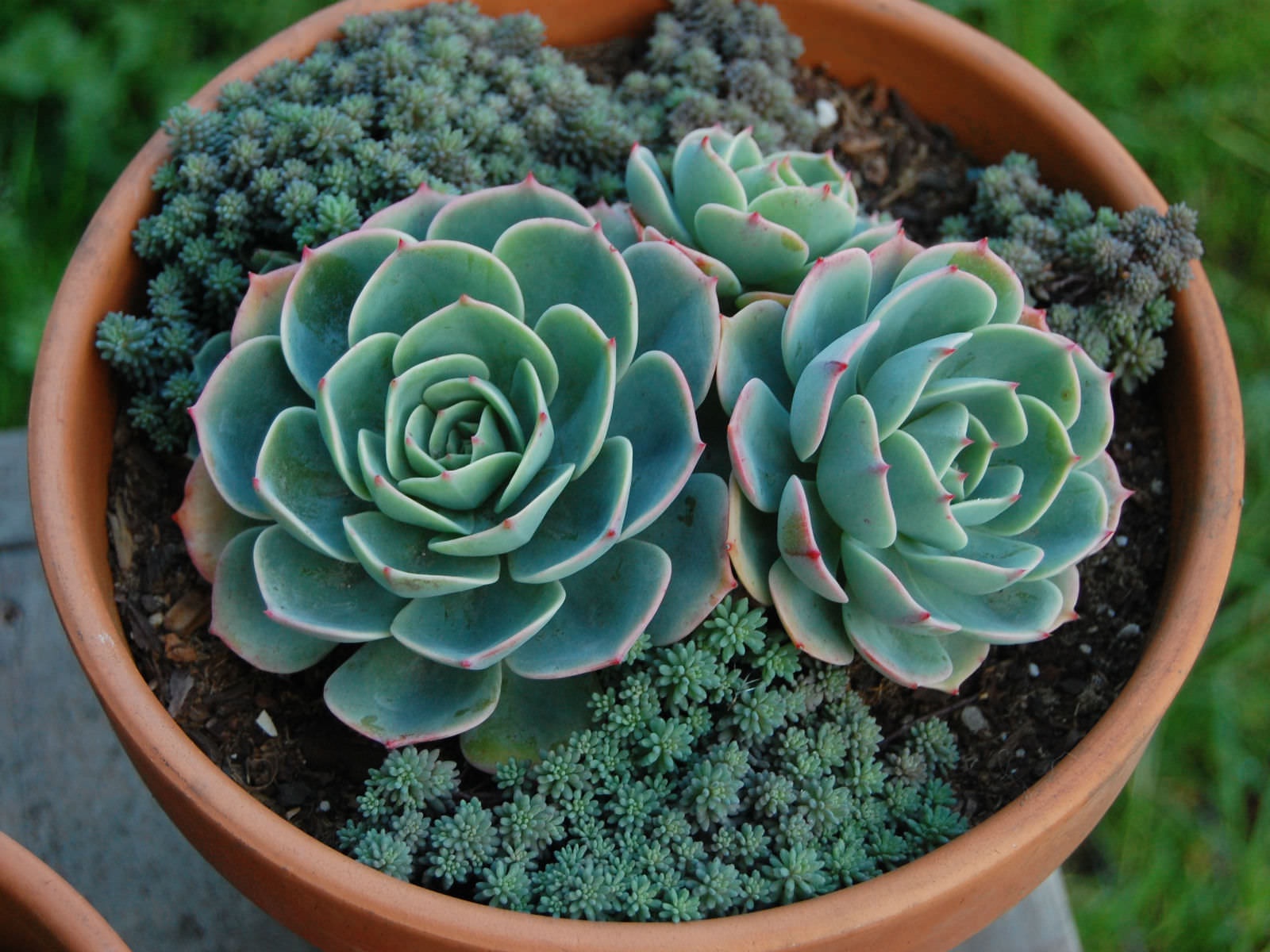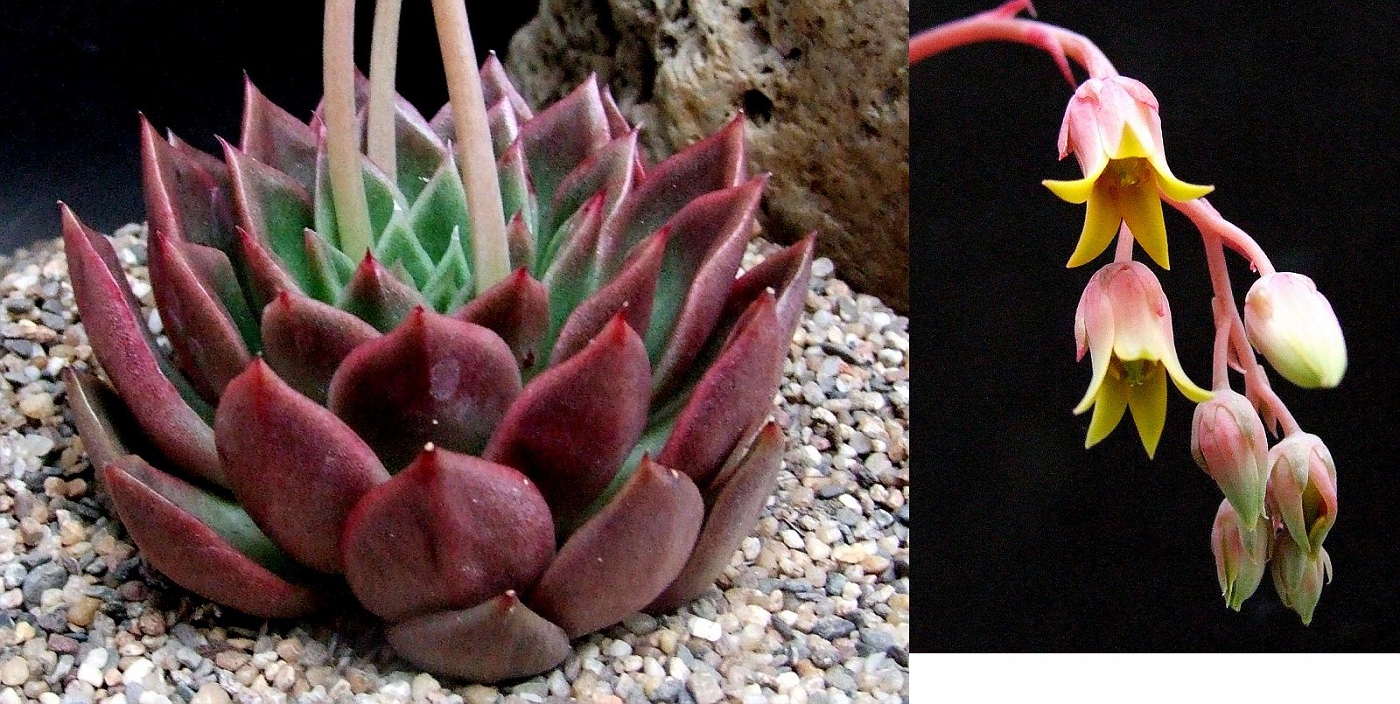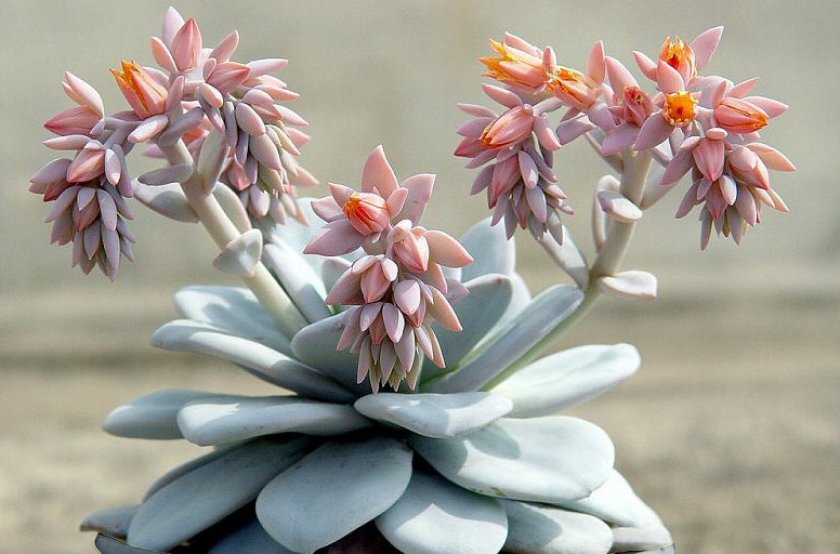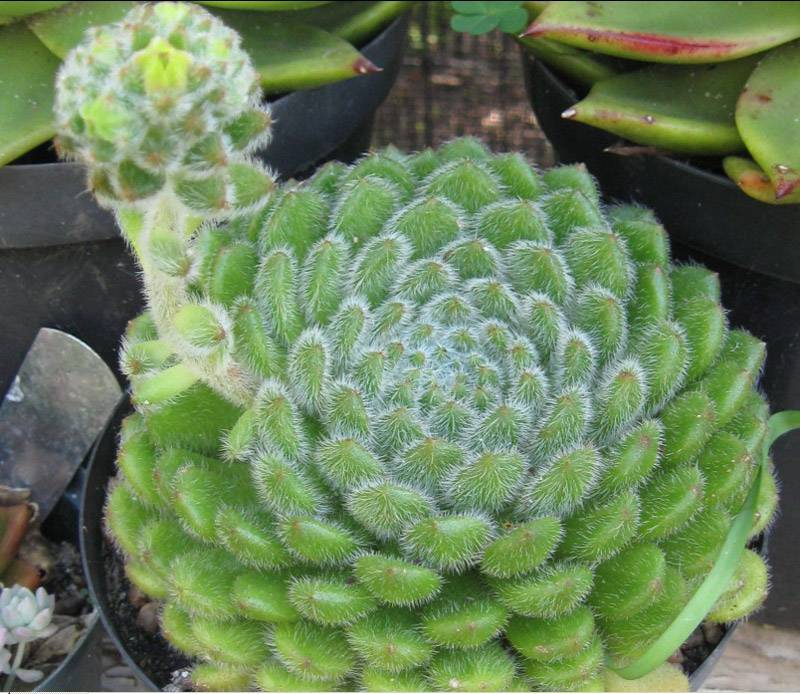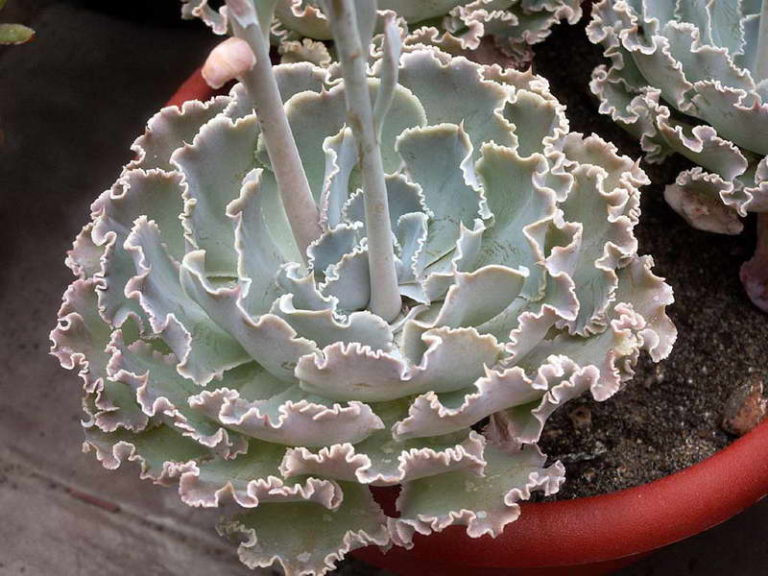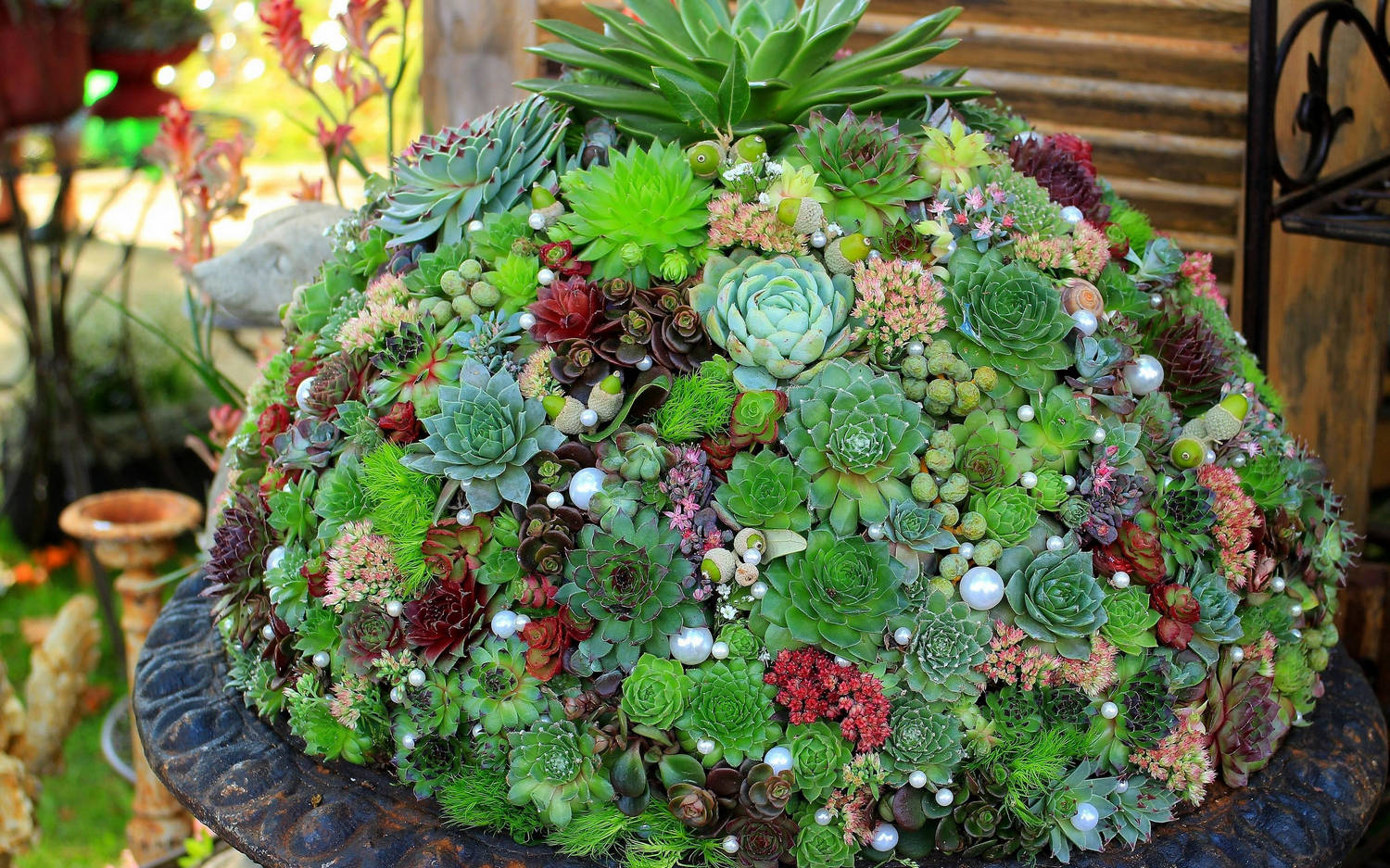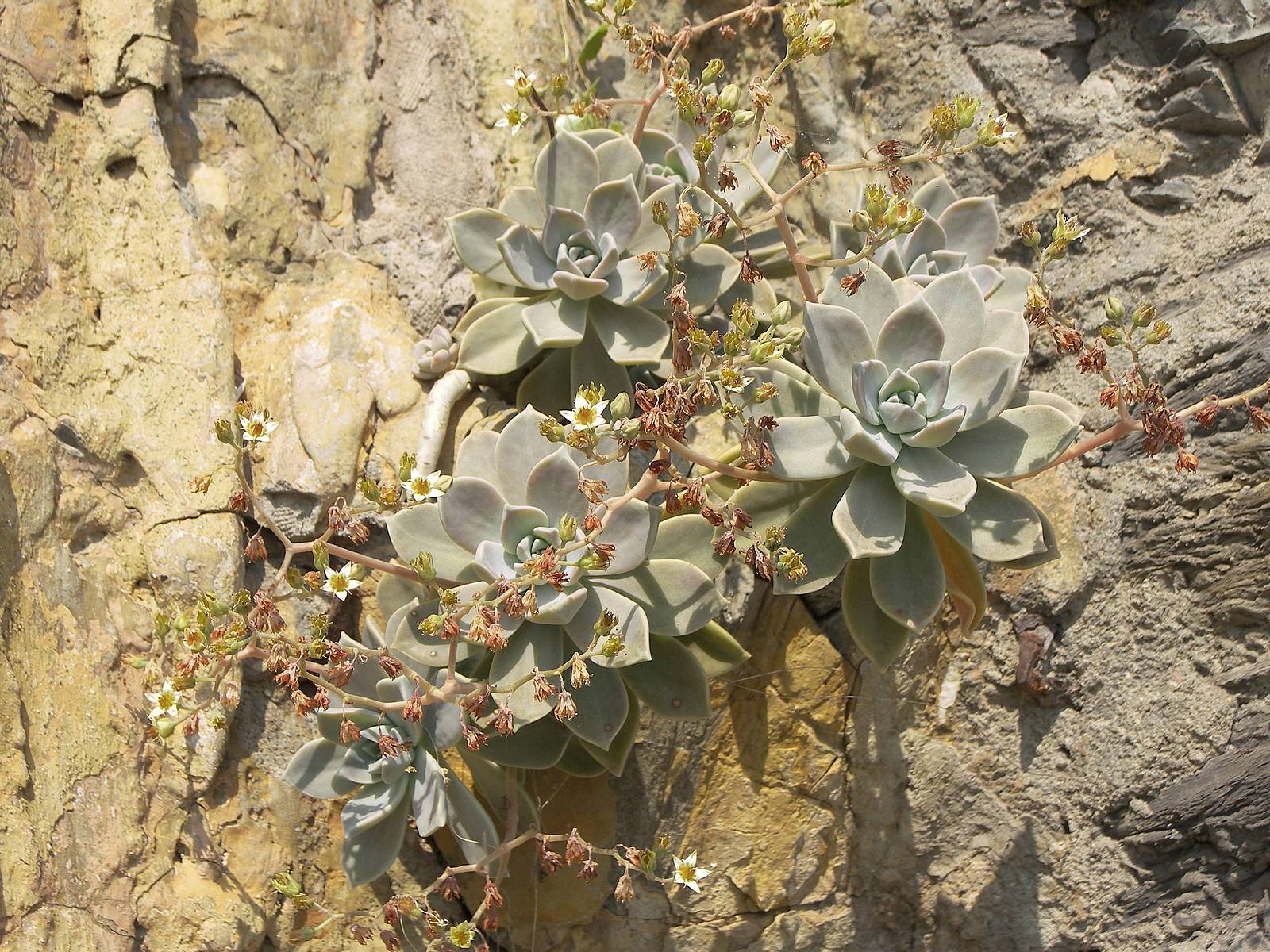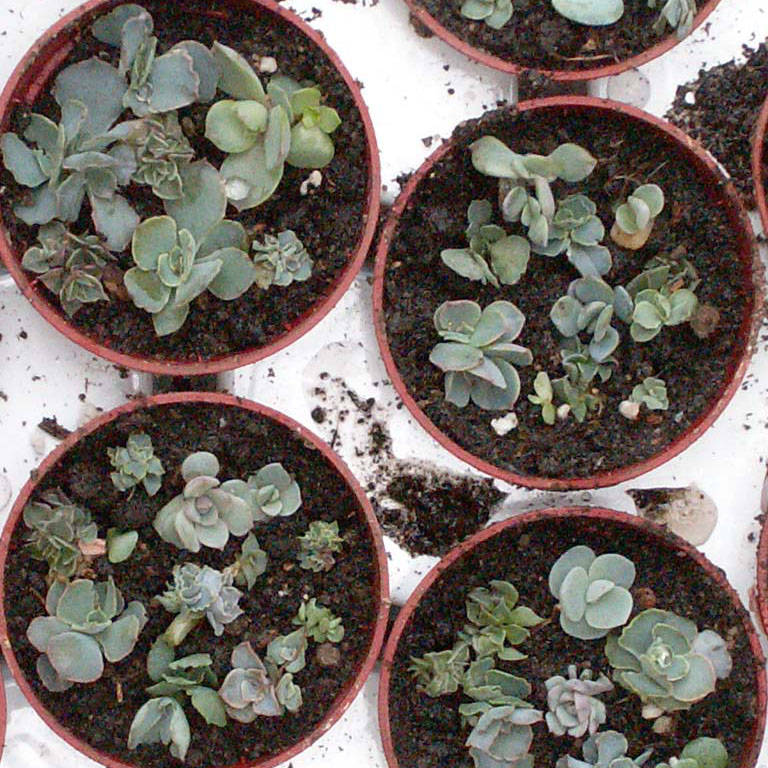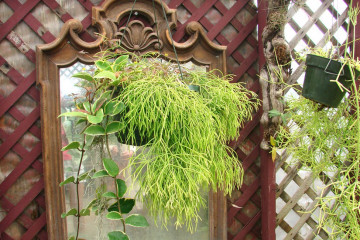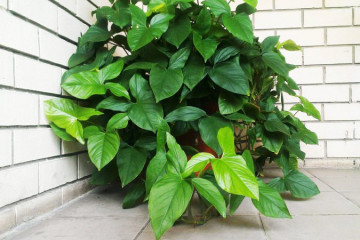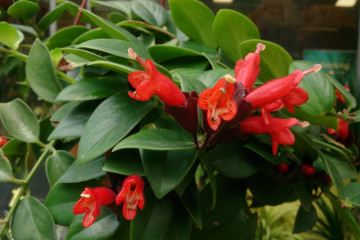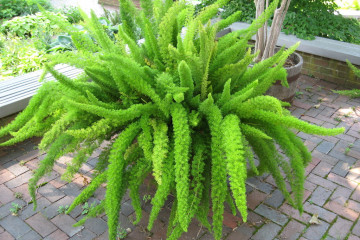Echeveria - home care and reproduction
Content:
Echeveria is a plant belonging to the Tolstyankov family, which is wonderfully grown as a houseplant. The echeveria flower arrived in Russia from Mexico and quickly gained popularity among flower growers, especially among those who are engaged in succulents. The popular name of the plant is stone rose. Also, by mistake, it is often confused with a young man because of its external resemblance. Novice flower growers should not be afraid to start this plant, since home care for an echeveria flower is quite simple. She is picky, unusual and interesting.
The main varieties of echeveria
In natural conditions, botanists have described 150 species of this plant, but only a few are grown at home.
Echeveria graceful
The main characteristics of the species are fleshy light blue leaves, which are 5 cm long and 2 cm wide, a flat rosette, straight shoots that stretch to the ground with age and are capable of independent rooting. In an adult plant, the rosette can reach 17 cm in diameter, its young shoots are located on long stems of pinkish or yellow color.
Echeveria Agavoides
It is represented by a single rosette reaching more than 25 cm in diameter. Short young shoots usually do not appear at all. Triangular leaves grow up to 9 cm long and 6 cm wide. The colors are green with red edging. Blooming view. Orange inflorescences are located on a high peduncle.
Echeveria Lau
Succulent plant with a rosette about 20 cm in diameter, leaves up to 6 cm in length. Feature - plaque on the leaves, due to which the plant looks almost white. Another difference from other varieties is large, up to 2 cm long flowers, located on wide inflorescences of a bright orange hue.
Echeveria bristly
Shrub species, which is usually uncommon for this species. Spherical rosettes, each of them has up to hundreds of bright olive leaves up to 9 cm long and up to 3 cm wide. The flowering period is summer. It got its name from the fluffy leaves covered with small bristles.
Echeveria Desmet
Perennial with a compact rosette, bluish leaves. Over time, the shoot begins to creep along the ground. It blooms in the middle of summer with yellow-orange flowers.
Echeveria Miranda
Its main feature is the unusual color of pointed leaves. They can be bluish, red, pink, yellow. Outwardly it resembles a lotus.
Echeveria Shaviana
Outwardly similar to a head of cabbage. It is characterized by a short stem and less strong leaf fleshiness than other representatives of the species. The leaves end in wavy edges, laid in a dense rosette. Blooms in mid-summer. During the dormant period, it sheds most of the crown.
Echeveria humpback-flowered
It is a small shrub with an erect stem, the rosette of which is formed from large gray-green foliage. The inflorescence is bright and large. It can contain from 30 to 60 small red flowers.Among succulent breeders, its hybrids are also popular - Echeveria Pearl of Nuremberg and Metallic.
Echeveria: home care
Subject to certain rules, a stone rose will be able to decorate any windowsill, grow in places that most plants do not like (for example, on the south side), and even delight with annual flowering. For echeveria, care is minimal, and the result will delight flower growers for many years.
Temperature
The succulent echeveria, like many of its other relatives, is undemanding to temperature conditions. In summer, during the growing season, it can withstand temperatures up to 27-30 ° C, in winter 10-12 ° C is considered the best option. In winter, this will help the laying of powerful peduncles for the next year. But room temperature is also suitable if it is not possible to remove the plant in a cool room.
Lighting
Very light-loving flower. For its cultivation, southern windows are perfect, which many indoor flowers avoid. However, young plants should be taught to bright light gradually to avoid sunburn. But later, it is in the sun that they feel best, the leaves acquire an interesting burgundy edging, and the resulting flowers are a real miracle. And this succulent will bloom in a sunny hot weather more magnificent, brighter and longer. Despite the fact that this plant is considered picky about the length of daylight hours, it is worth taking care that at least during the period of active growth it was at least 10-12 hours. For this, many transplant it from home to fresh air for the summer, to that the side of the site where there is most of the sunlight.
Watering
The plant perfectly tolerates dry air, therefore, it is impossible to spray it from a spray bottle in any case, with an excess of moisture, leaf rot is possible. In the warm season, watering is necessary only as needed, when the earthy clod dries out completely. When planting outdoors, watering is necessary only in case of dry summers. In winter, at low air temperatures, watering should be done once every two weeks, at normal temperatures - as needed, only with settled water. Watering only basal, so as not to hit the outlet.
Spraying
Spraying should be avoided even in the hottest weather, as this Mexican plant is adapted to dry air, but does not tolerate accumulation of moisture on the leaves. To remove dust, the leaves are wiped with a slightly damp cloth.
Humidity
Echeveria does not like rooms with excessive air humidity, preferring dry ones. Also, soil moisture does not play a big role for it. She will calmly endure even a small period of drought.
Priming
An excellent soil option would be a ready-made substrate for cacti or succulents. Plants grow and develop beautifully there. But for those flower growers who prefer to make their own soil mixture, there is the following option:
- clay-sod land (3 parts);
- leafy rotted earth (1 part);
- coarse river sand (1 part);
- brick chips (1 part).
Top dressing
They feed a stone rose during the growing season, in winter the subcortex is completely canceled. You need to apply mineral fertilizers for succulents or cacti, sold in stores. No organic fertilizers needed.It is also worth avoiding excess nitrogen, this can lead to the development of some fungal diseases. Do not feed the plant too often, as excess fertilizer can damage the delicate roots of the plant.
How echeveria reproduces
There are several ways to propagate Echeveria. Germinating from seeds is the hardest part. The simplest ones are leafy cuttings and daughter rosettes.
Germinating seeds
In late February - early March, planting material is planted in a mixture of peat and sand. Cover with cellophane or glass on top. The room temperature should be at least 20 ° C, but not too high. Periodically ventilate the greenhouse to avoid the formation of mold, and irrigate with a spray bottle. After about two weeks, each seed will sprout.
After 2-3 leaves appear on them, you can carry out a pick in separate small pots with a mixture of leafy earth and sand (2: 1). After the rosettes grow up to 2-3 cm, they can be transplanted into pots corresponding to their size.
Rooting cuttings
Before planting cuttings, you need to prepare pots with a diameter of about 10 cm and fill them with river sand or compost. Before planting cuttings (both leafy and stem), they are left to lie down a little so that they wither. As a rule, this method of propagation is always effective, and all cuttings are rooted. The best time to reproduce in this way is in the spring, but you can do it in the summer before the end of the growing season.
Reproduction by rosettes
Echeveria reproduces most easily using daughter outlets. Most of its species form small rosettes in the spring, which can be easily planted in a pot and a new plant grown. The rosettes are planted in small containers filled with soil for adult plants. Their complete rooting in a new place occurs very quickly.
Transfer after purchase
Newbie flower growers often do not know how to care for Echeveria after purchase. They transplant it into a new pot right away. Yes, a transplant is necessary, because the substrate in which the plant is sold is unsuitable for long-term cultivation, since there are practically no nutrients in it. But you do not need to transplant immediately, a quarantine period of about two weeks is required. The plant must be placed on a separate windowsill so that it adapts to the new environmental conditions. It also needs to be checked for diseases and pests. After that, the stone rose is transplanted into a composition for adult plants, laying a drainage layer on at least a quarter of the pot.
Possible problems in the cultivation of Echeveria
The most dangerous for the plant is an excess of moisture, its accumulation in the outlets, as well as excessive mineralization of the roots. This is something that is easy enough to avoid. But there are other problems as well.
Echeveria's leaves fell off
Many, especially inexperienced, flower growers often wonder why this unpretentious flower has fallen off its leaves. Complete leaf fall, as a rule, does not occur, but only a rosette remains on a bare stem. The main reason is root decay due to excess moisture. This problem is especially relevant in the cold season. Do not despair. First, fallen leaves can be rooted if they are healthy. Many young plants will grow from them.Secondly, it is worth drying the earthen lump, you can get it out of the pot, carefully cut off the decayed roots and plant a stone rose in a new soil.
Echeveria grows up
With improper care, echeveria can stretch out. In science, too much upward growth of succulents is called etiolation. This happens when there is a lack of light, which happens especially often in winter.
If the stone rose is already elongated, you need to cut off and root the elongated crown or plant all the children, shoots and root the cuttings. If the crown is stretched out, and there is still no normal rooting outlet, you should wait until it appears. But only in suitable conditions specified above.
Echeveria (stone rose) is a beautiful and unusual succulent, undemanding and unpretentious to care for. It is definitely worth starting for those who love to grow representatives of this floral group; it will decorate any alpine slide. Beginners can practice on it, it will delight lovers of floriculture, they will be proud of this plant at any time of the year.
